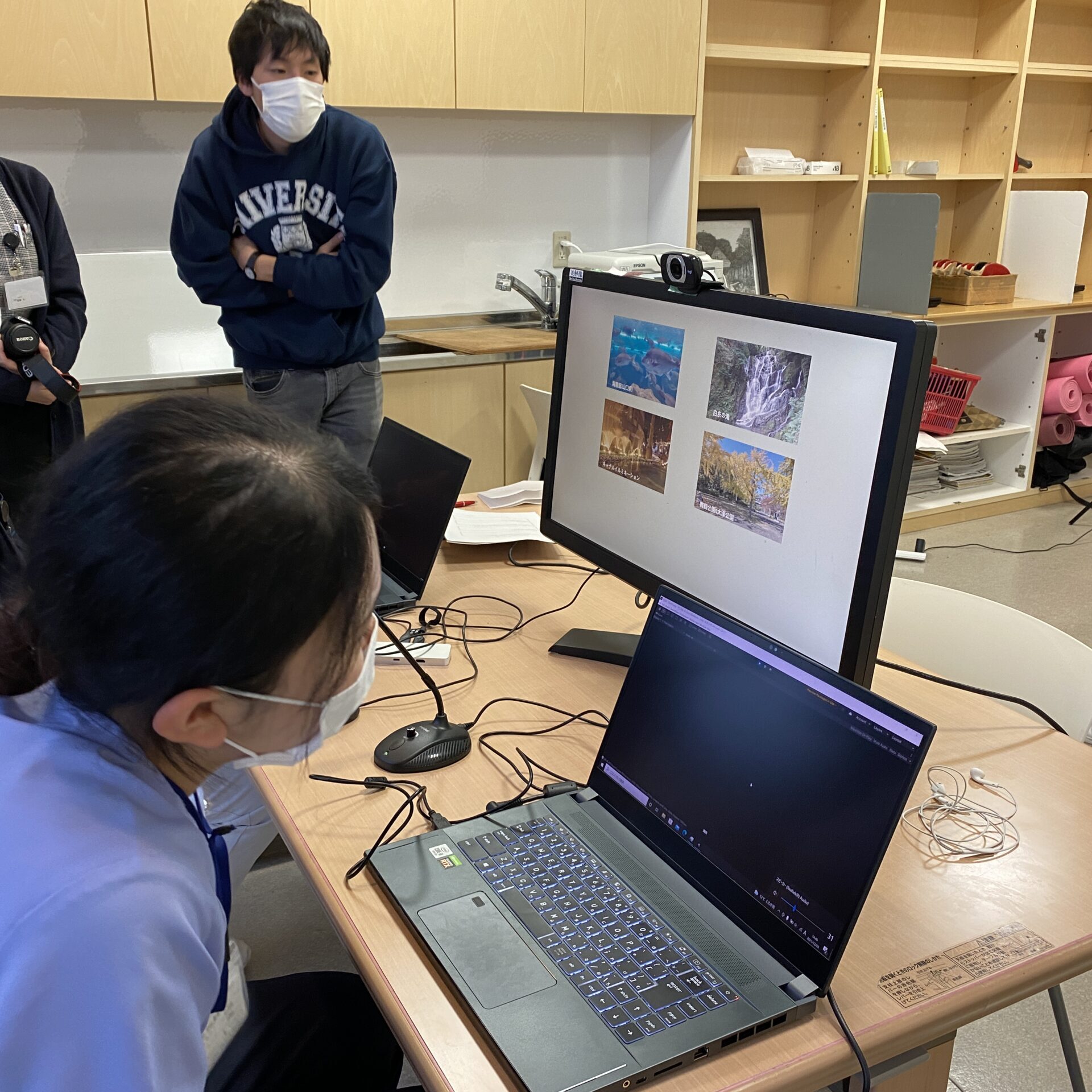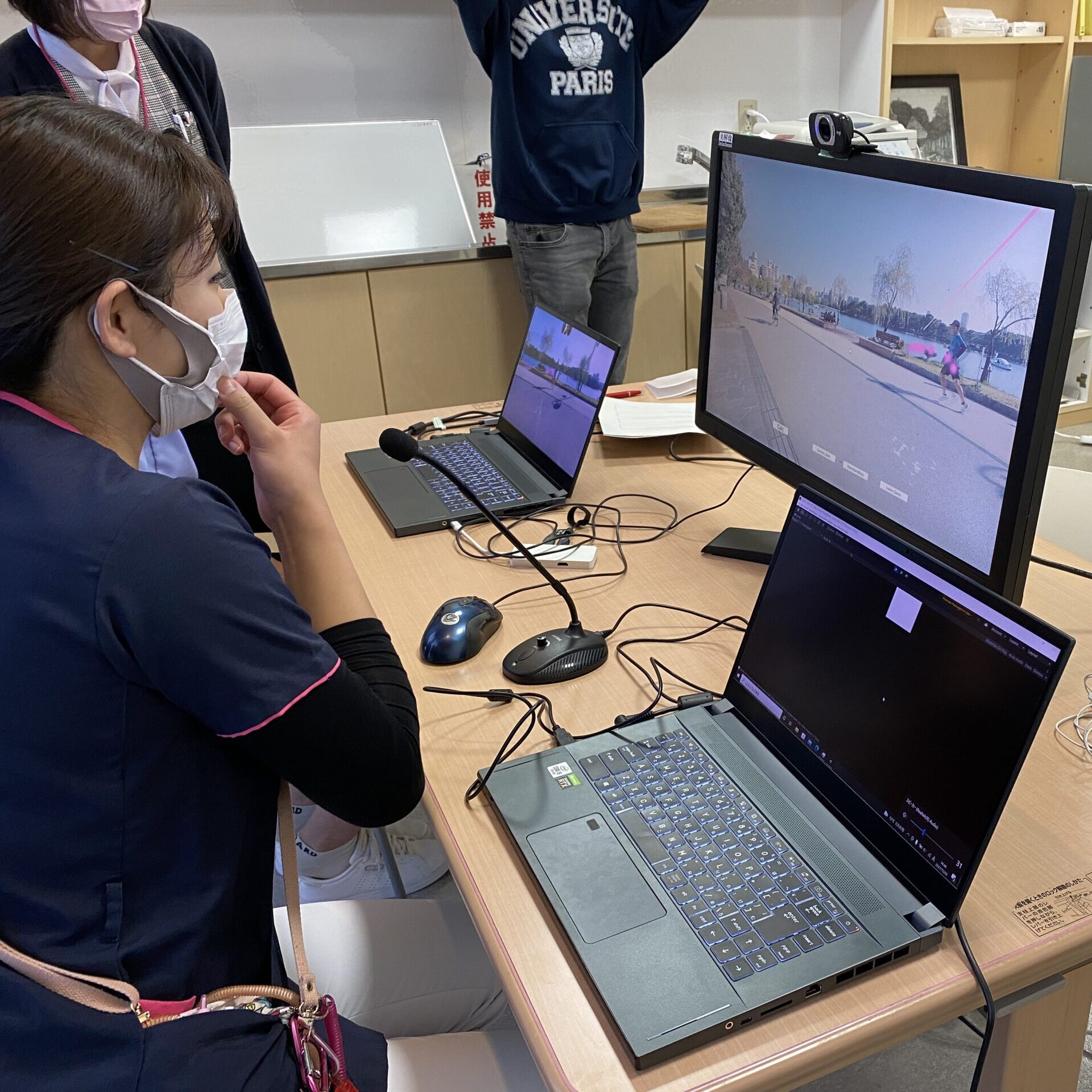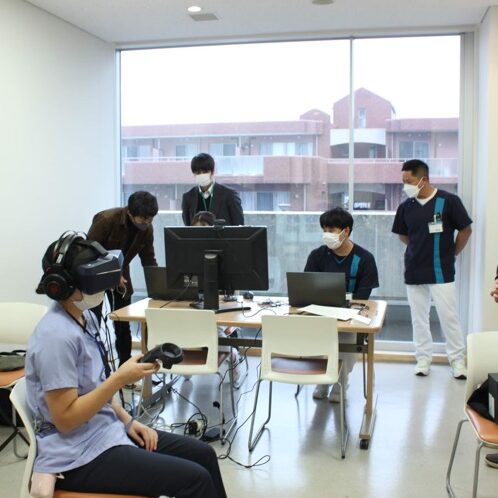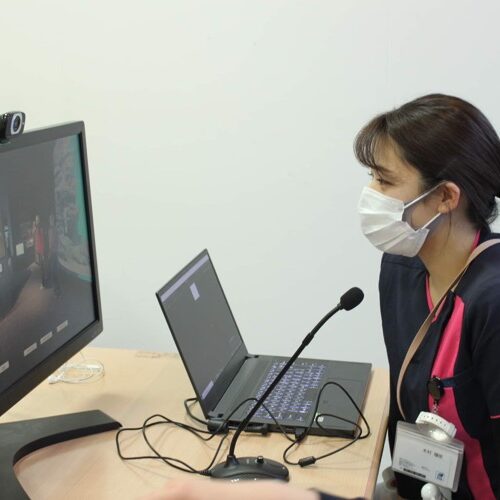VR Reminiscence as "Care" Emphasis on Narratives and Phenomenological View of the Person
Time
2023-2024
Place
– Rainbow & Sea Hospital (Saga, Japan)
When I was a child, I was diagnosed with a serious disease. Through this experience, I came to understand the distinction between disease and illness. Kay Toombs insightfully describes these differing perspectives in The Meaning of Illness, where she uses a phenomenological lens to highlight how physicians tend to view disease as a pathological condition from a naturalistic standpoint, while patients experience illness as something deeply personal and lived.
During my hospitalization, I felt disheartened by the unchanging view from the window. I longed to see the world, to experience its beauty and diversity beyond the hospital walls.
This experience inspired me to begin offering virtual reality experiences to hospitalized patients in 2019.
When patients are hospitalized and unable to leave their rooms easily, virtual reality (VR) technology can offer a way to make the impossible possible.
In particular, we focus on enhancing communication between patients and those familiar to them, especially nurses.
As Oliver Sacks emphasized the importance of narrative in illness experience, we aim to explore how cutting-edge technology can mediate and facilitate these personal stories.
For this project, we collaborated with a psychiatric hospital. While the average hospital stay in Japan has generally been decreasing, the average duration in 2023 was still 26.3 days across all hospital beds, with psychiatric beds averaging a significantly longer 263.2 days.
We selected seven patients (four men and three women) and invited them to share memories of meaningful places from their lives.
We then filmed these locations using a 360-degree camera (the Insta360 Titan, capable of shooting in up to 11K resolution). The selected locations included Okinawa, Hiroshima, an amusement park in Kumamoto, mountain scenery in Nagano, and a local festival in Karatsu.
We qualitatively analyzed the conversations between patients and nurses through a phenomenological lens, focusing on the lived experiences of each individual.
Our findings suggest that VR reminiscence is not only effective for addressing symptoms such as depression, cognitive decline, or apathy as previous study reported, but also functions as a powerful medium for meaningful dialogue. These conversations help build mutual understanding and strengthen the relationship between patients and nurses.
VR Reminiscence in a Psychiatric Hospital Vol. 1
Time
2021-2022
Place
– Rainbow & Sea Hospital (Saga, Japan)
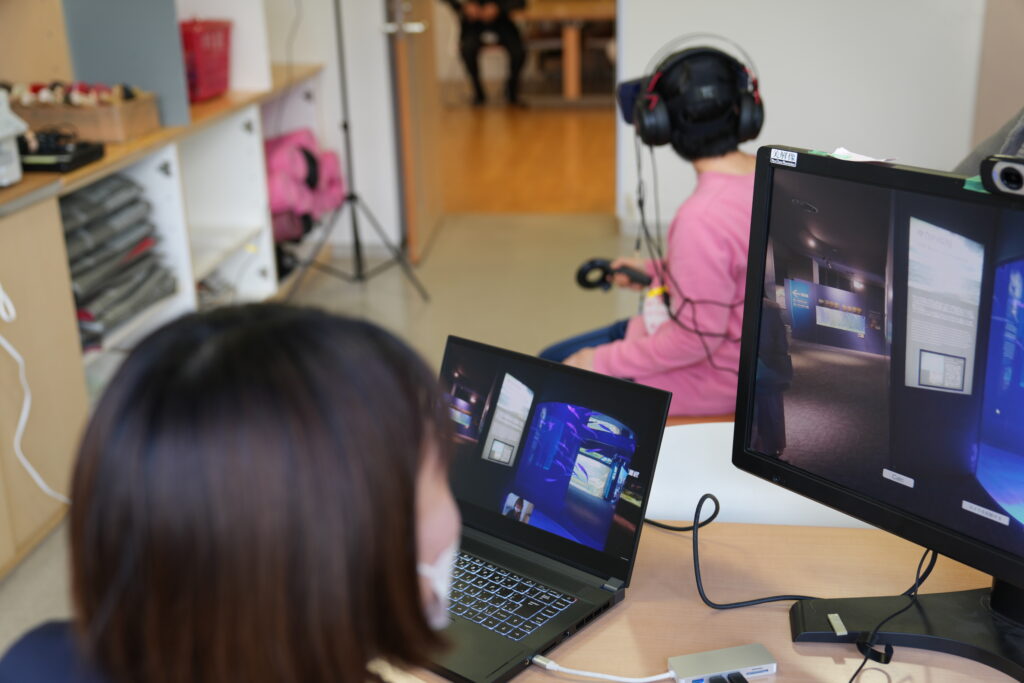
What is it?
Our study focuses on the development of a VR system that enables patients to communicate with others and see their faces in a picture-in-picture format. Through creating VR experiences that feature memorable places for patients, we studied the effect of this system on hospitalized patients. Our research suggests that the system and personalized VR content may assist in preventing dementia and reducing negative symptoms of schizophrenia by promoting conversations about recalled memories.
Why do this?
We noticed a limitation in existing VR experiences which are solitary and do not support face-face communication. This inspired us to conduct research to overcome this limitation. Our focus was on patients in psychiatric hospitals who often have prolonged stays. Our VR tool enables these patients to interact with familiar people even remotely, look back on past memories, and share experiences. We believe this technology will be increasingly important in the future.
